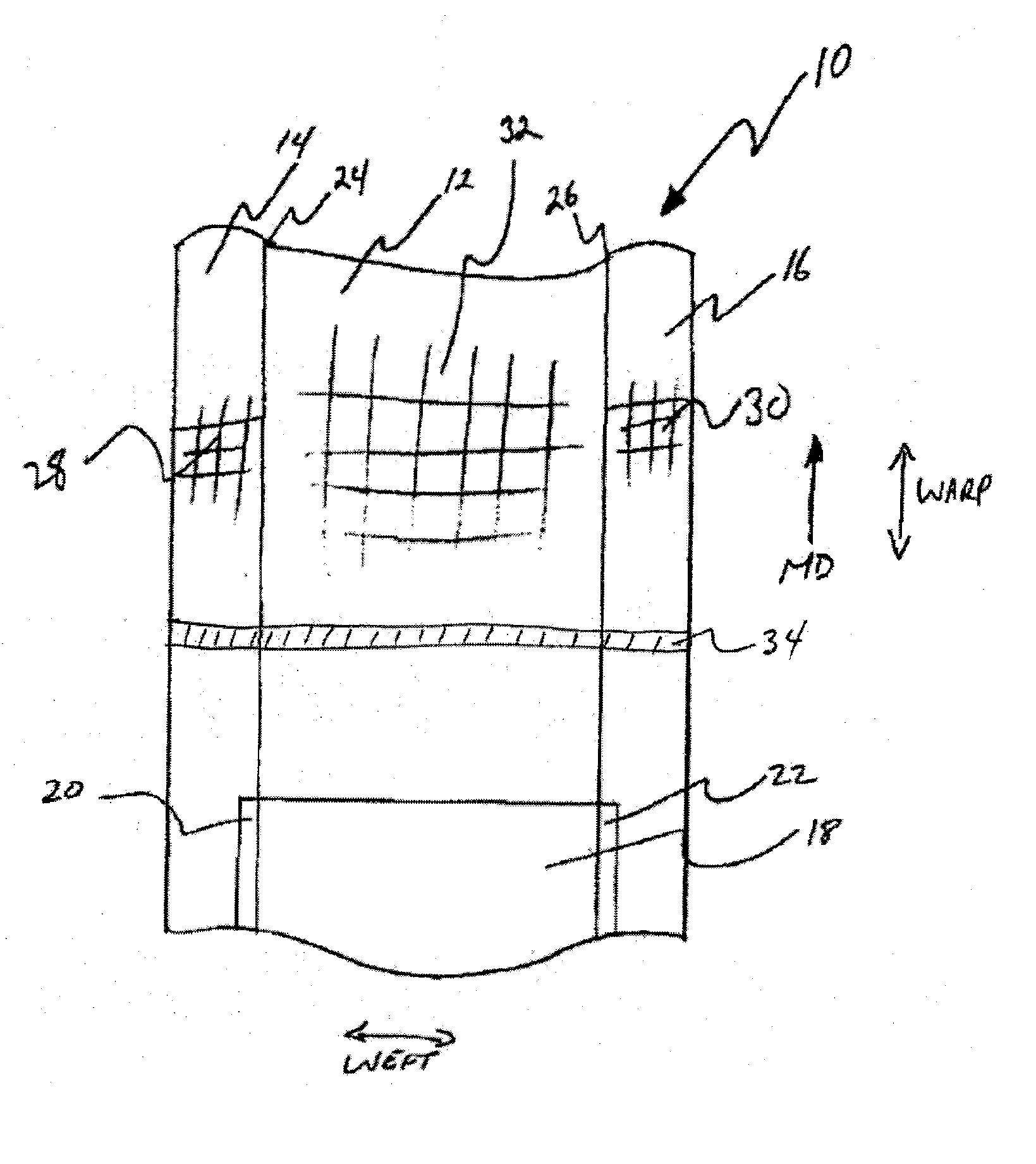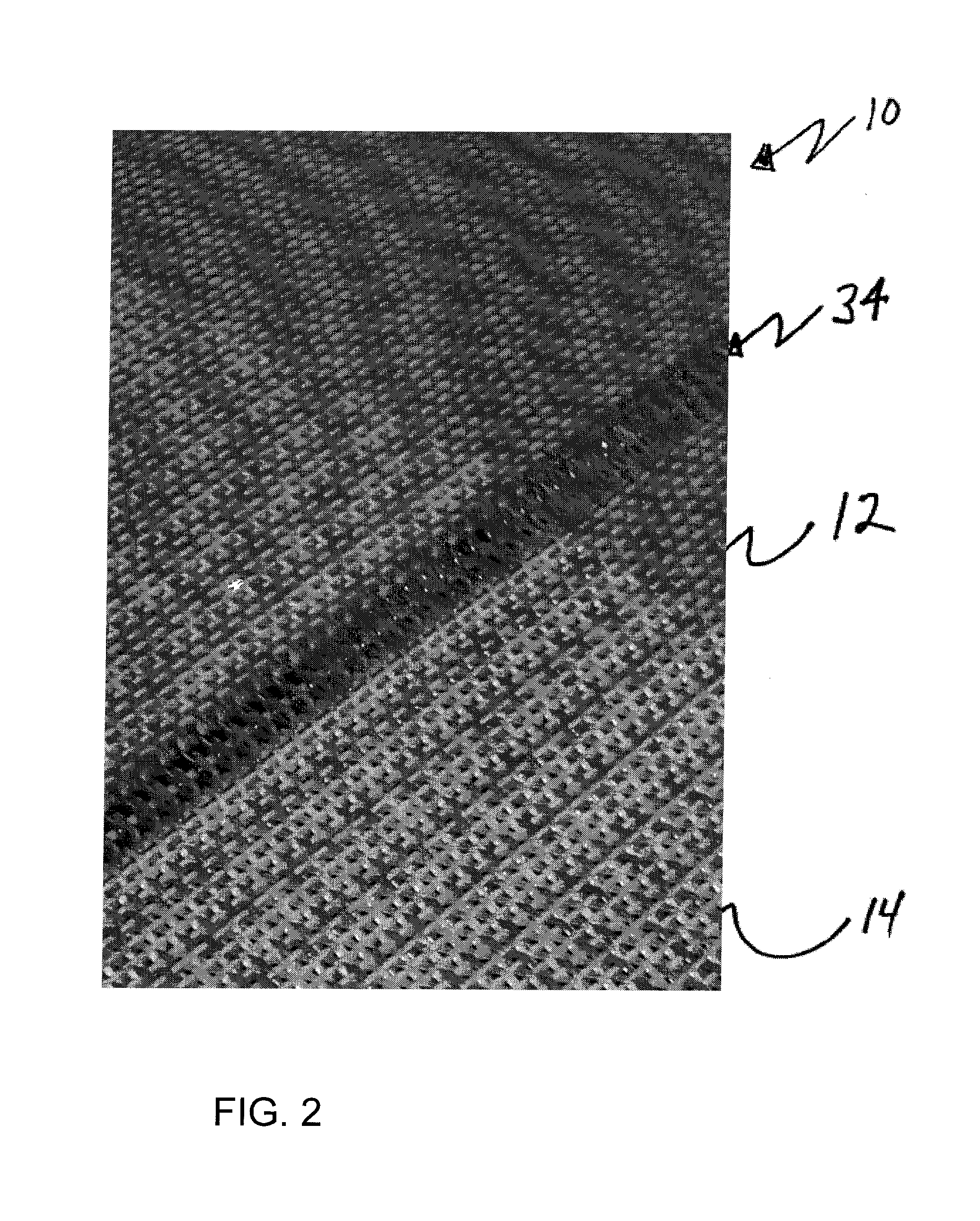Hydrolysis resistant woven corrugator fabric
a technology of woven corrugator fabric and hydrolysis resistance, which is applied in the field of woven belts, can solve the problems of reducing restricting the speed of the corrugator machine, and rewetting of the corrugated box-board, so as to improve the drying rate and speed up the machine speed. , the effect of improving the drying ra
- Summary
- Abstract
- Description
- Claims
- Application Information
AI Technical Summary
Benefits of technology
Problems solved by technology
Method used
Image
Examples
Embodiment Construction
[0037]FIG. 1 depicts a schematic plan view of the fabric 10 of the present invention. FIG. 2 is a plan view of the seam area of the woven fabric of the present invention depicting a spiral seam. FIG. 3 is a plan view of the seam area of the woven fabric of the present invention depicting a loop seam. The composite fabric has a central fabric portion 12, a first fabric side portion 14, and a second fabric side portion. MD indicates the machine direction of the composite fabric.
[0038]It is understood that the first fabric side portion 14 and the second fabric side portion 16 are interchangeable, and reference to one may be interchanged with the other. Additionally, the plan view of FIG. 1 may represent either the board side or the back side.
[0039]The central portion 12 can be any woven fabric known in the art. The material used for the central portion 12 is preferably fabricated using polyester monofilament of one layer or more than one layer, preferably 1-10 layers, and more preferab...
PUM
| Property | Measurement | Unit |
|---|---|---|
| width | aaaaa | aaaaa |
| width | aaaaa | aaaaa |
| width | aaaaa | aaaaa |
Abstract
Description
Claims
Application Information
 Login to View More
Login to View More - R&D
- Intellectual Property
- Life Sciences
- Materials
- Tech Scout
- Unparalleled Data Quality
- Higher Quality Content
- 60% Fewer Hallucinations
Browse by: Latest US Patents, China's latest patents, Technical Efficacy Thesaurus, Application Domain, Technology Topic, Popular Technical Reports.
© 2025 PatSnap. All rights reserved.Legal|Privacy policy|Modern Slavery Act Transparency Statement|Sitemap|About US| Contact US: help@patsnap.com



